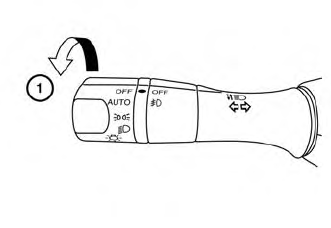Nissan Murano: Safety—Seats, seat belts and supplemental restraint system / Child safety
WARNING
Do not allow children to play with the seat belts. Most seating positions are equipped with Automatic Locking Retractor (ALR) mode seat belts. If the seat belt becomes wrapped around a child’s neck with the ALR mode activated, the child can be seriously injured or killed if the seat belt retracts and becomes tight. This can occur even if the vehicle is parked. Unbuckle the seat belt to release the child. If the seat belt cannot be unbuckled or is already unbuckled, release the child by cutting the seat belt with a suitable tool (such as a knife or scissors) to release the seat belt.
Children need adults to help protect them. They need to be properly restrained.
In addition to the general information in this manual, child safety information is available from many other sources, including doctors, teachers, government traffic safety offices, and community organizations. Every child is different, so be sure to learn the best way to transport your child. There are three basic types of child restraint systems:
- Rear-facing child restraints
- Forward-facing child restraints
- Booster seats
The proper restraint depends on the child’s size. Generally, infants up to about 1 year and less than 20 lbs. (9 kg) should be placed in rear-facing child restraints. Forwardfacing child restraints are available for children who outgrow rear-facing child restraints and are at least 1 year old. Booster seats are used to help position a vehicle lap/shoulder belt on a child who can no longer use a forward-facing child restraint.
WARNING
Infants and children need special protection. The vehicle’s seat belts may not fitthemproperly.The shoulder beltmay come too close to the face or neck. The lap belt may not fit over their small hip bones. In an accident, an improperly fitting seat belt could cause serious or fatal injury. Always use appropriate child restraints.
All U.S. states and Canadian provinces or territories require the use of approved child restraints for infants and small children. For additional information, refer to “Child restraints” in this section.
A child restraint may be secured in the vehicle by using either the LATCH (Lower Anchors and Tethers for CHildren) system or with the vehicle seat belt. For additional information, refer to “Child restraints” in this section.
NISSAN recommends that all pre-teens and children be restrained in the rear seat. Studies show that children are safer when properly restrained in the rear seat than in the front seat.
This is especially important because your vehicle has a supplemental restraint system (air bag system) for the front passenger. For additional information, refer to “Supplemental Restraint System (SRS)” in this section.
 Seat belt maintenance
Seat belt maintenance
To clean the seat belt webbing, apply
a mild soap solution or any solution recommended
for cleaning upholstery or
carpet.Then wipe with a cloth and allow
the seat belts to dry in the shade...
 Infants and Small children
Infants and Small children
Infants
Infants up to at least 1 year old should be
placed in a rear-facing child restraint.
NISSAN recommends that infants be
placed in child restraints that comply with
Federal Motor Vehicle Safety Standards or
Canadian Motor Vehicle Safety Standards...
Other information:
Nissan Murano (Z52) 2015-2024 Service Manual: Operation
Switch Name and Function No. Switch name Description AEB system setting screen (Integral switch settings screen) The setting of AEB/I-FCW system can be switched between ON and OFF Menu Displayed by Pressing Each Switch SYSTEM DISPLAY No. Switch name Description AEB warning lamp When any of the following conditions, the AEB warning lamp illuminates: An abnormal condition is present in the AEB system The AEB system is turned OFF When any of the following conditions, the AEB warning lamp blinks: The distance sensor area of the front of the Nissan Murano vehicle is covered with dirt or is obstructed The interior temperature of the vehicle is extremely high The windshield is dirty, frosted, fogged up, or damaged in front of the lane camera unit The lane camera unit or the lane camera unit bracket is not mounted properly Nissan Murano Vehicle ahead indicator Indicates whether it detects a vehicle ahead...
Nissan Murano (Z52) 2015-2024 Service Manual: P0130 A/f Sensor 1
DTC Description DTC DETECTION LOGICTo judge malfunctions, the diagnosis checks that the A/F signal computed by ECM from the A/F sensor 1 signal fluctuates according to fuel feedback control. The A/F signal computed by ECM from the A/F sensor 1 signal is constantly in a range other than approx...
Categories
- Manuals Home
- Nissan Murano Owners Manual
- Nissan Murano Service Manual
- GAS STATION INFORMATION
- Turning the AEB system on/off
- Fuel recommendation
- New on site
- Most important about car
Autolight system

The autolight system allows the headlights to turn on and off automatically. The autolight system can:
Turn on the headlights, front parking, tail, license plate and instrument panel lights automatically when it is dark. Turn off all the lights (except daylight running lights) when it is light. Keep all the lights on for a period of time after you place the ignition switch in the OFF position and all doors are closed.